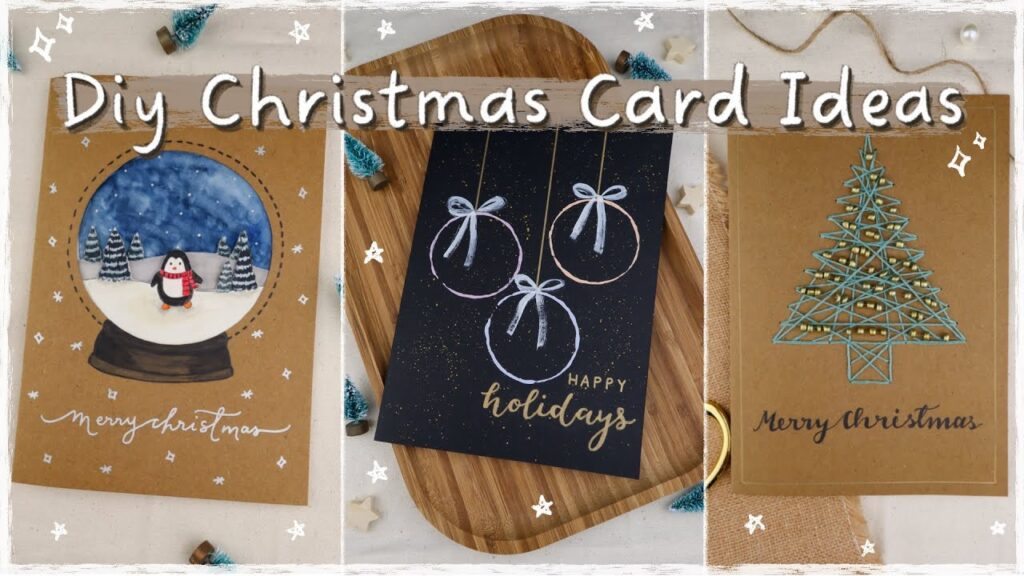Sending Christmas cards sounds easy until it is mid December, the stamps are gone, and your photo layout keeps cutting off someone’s head. I’ve been there. The good news is you can make Christmas cards simple, personal, and on time with a few clear steps. In this guide I cover timing, etiquette, design choices, printing, sustainability, and a short history for context. You will see practical tips on envelopes, addresses, and how to avoid last minute chaos. I also point you to real deadlines and stats so you can plan with confidence. And yes, we will use the exact phrase Christmas cards in a few places to satisfy SEO while keeping the writing human.
Why Christmas cards still matter
A quick fact helps set the stage. Holiday cards are still the biggest seasonal category of greeting cards. Industry data shows Americans buy billions of cards each year, and Christmas leads the pack by a wide margin. That means sending Christmas cards is not old fashioned. It is normal, expected, and still a nice signal that you care. In my experience, one thoughtful message beats ten quick texts. It slows us down in a good way.
If you want to add a little sparkle, you can seal envelopes with a sticker or include a small photo print. If you print your own stickers, here is a useful internal read on holiday ideas: 8 Creative Ways to use Custom Holiday Stickers This Season. It includes tips like card seals and personalized gift tags that pair well with cards.
Deadlines: when to send Christmas cards in 2025
USPS has posted its 2025 holiday mailing guidance. For the contiguous United States, plan to get First-Class Mail, which includes greeting cards, into the system by December 17. Ground Advantage shares the same recommended date. Priority Mail is December 18, and Priority Mail Express is December 20. If you are mailing from Alaska, Hawaii, or U.S. territories, check your adjusted dates and try to send a day earlier. International and military mail have earlier cutoffs. In plain terms, if your Christmas cards are not stamped and ready by the week of December 15, you are cutting it close. Mail earlier and skip the stress.
A simple plan that works:
- Finalize your list by November 15.
- Order or print cards by December 1.
- Write and address during the first week of December.
- Mail by December 10 to build in a buffer.
A short history you can mention in your note
The first commercial Christmas card appeared in 1843 in London. Sir Henry Cole asked artist John Callcott Horsley to create a card so he could greet many friends at once without writing long letters. That first card mixed celebration and charity. It set the template for what followed. I like this story because it reminds us the point was always simple connection at scale, not perfection.
Addressing and etiquette that will not get you side-eyed
Etiquette is not about being fancy. It is about making things smooth for the person opening the envelope. A few basics:
- Use clear, consistent names. For families, list names in a sensible order. Tradition puts the adult names first, then the children.
- Use apartment and unit numbers. Mail gets lost without them.
- Match your return address to your current contact info.
- If you include a newsletter, keep it to one page. Short paragraphs win.
- Put the card in the envelope so the front faces the flap. It opens cleanly and looks right.
If you are sending business Christmas cards, keep messages warm but neutral. Avoid humor that can miss. A short note like “Thank you for your support this year. Wishing you a restful holiday and a strong start to January” is safe and sincere.
Design choices that make Christmas cards feel personal
Good cards do a few simple things well. You do not need ten fonts or heavy graphics. Here is a straightforward checklist.
Choose a format
- Flat card is simple and modern. Good for a bold photo or crisp illustration.
- Folded card gives you more space for a note. It also stands on a shelf better.
- Postcard saves on postage for casual lists. Check local rules for size and thickness.
Set your size and orientation
Standard 5 x 7 inches works for most Christmas cards. It fits frames and standard envelopes. Landscape photos of families often look cleaner, but tall portraits can be striking if your background is uncluttered.
Pick a typeface and stick to it
One primary font for headlines and one for body text is enough. If you include a script, keep it legible. Test names like “M” and “J” for readability at card size.
Color that prints well
Traditional red and green are fine. Deep blues and golds also feel seasonal without being loud. If you are unsure, run a small proof.
Paper matters more than people think
Heavier cover stock feels nice in hand and survives the mail. If you want a quick refresher on card stock vs cover stock, this internal reference is handy: What is Card Stock vs Cover Stock? What’s the Difference?. It explains weight and finish in plain terms so you pick the right feel.
Photos: a few practical tricks
- Shoot in open shade or near a window.
- Leave safe margins. Printers trim a tiny bit on all sides.
- Watch for heavy blacks that can smudge on uncoated stock.
- If someone insists on a silly face, take one serious shot too. You will thank yourself later.
Writing the message inside
Short wins. Most people skim before they read. Try a clear opener plus one personal line.
- “Wishing you a calm Christmas and a hopeful New Year.”
- “I’m grateful we got to camp together in July. More in 2026?”
- “We moved in May. New address below. You are always welcome to visit.”
Add a custom post-script for close friends if you like. A handwritten PS feels real and takes ten seconds.
Address lists without the pain
Keep a single spreadsheet with columns for Name, Street, City, State, ZIP, Country, Notes, and Last Sent. Each year, filter by Last Sent and update. If you track gifts or kids’ names, add columns. When you order envelopes printed, export a CSV and map fields. If you print labels, use a clean sans serif font at 12 to 14 point. No one should squint to find their apartment number.
Stamps, returns, and handling
Holiday stamps are fun but not required. First-Class is what you need for Christmas cards in the U.S. If your card is square or extra thick, check postage because nonstandard shapes can cost more. Always add a return address. It catches minor address errors and saves cards that would otherwise vanish into the system. If a card comes back, correct your sheet immediately. Future you will be happy.
Sustainability: what to avoid and what to pick instead
If you want to recycle cards later, avoid glitter and plastic badges. Glitter can contaminate paper recycling and often ends up as microplastic in waterways. Plain paper cards without foil or glued extras are easier to recycle. If you love sparkle, try a printed effect that mimics shimmer or keep any glittered cards for crafts rather than the recycling bin. Look for FSC certified paper or printers that use recycled stock.
Common questions about Christmas cards
How many should I order?
Count your list, add 10 for mistakes and last minute adds. If you are indecisive about photos, order a small batch of two designs.
Is a Happy New Year card okay if I miss the deadline?
Yes. Many people send New Year cards during the first week of January. It is better to send late than not at all.
What greeting is safe for mixed audiences?
“Warm holiday wishes to you and yours” is simple and respectful. If you know someone celebrates Christmas, say Christmas.
Do family name order rules still matter?
Use common sense. Write names the way each family uses them. Tradition puts one parent first, then the other, then children, but clarity and respect beat old rules. For a formal list, you can still follow classic ordering conventions.
A quick workflow to finish on time
Here is the flow I use. It keeps Christmas cards on track without feeling like a chore.
- Pick the card format and paper by November 10. Decide flat vs folded. Choose size, stock, and envelope color.
- Shoot the photo by November 20. If you do not use a photo, finish your illustration or layout by then.
- Finalize your address list by Thanksgiving weekend. Ask for updates with one text to your group thread.
- Order cards by December 1. Approve the proof the same day.
- Write notes over three nights. Do 10 to 20 at a time. Keep a pen you like and a simple message you can tweak.
- Stamp and mail by December 10. If life happens, you still land before USPS’s December 17 First-Class guidance.
Advanced touches if you have time
- Envelope printing with names in a friendly serif or script.
- Seals or stickers that match your card colors.
- A short year-in-review insert with three bullet points: one work note, one family note, one small joy story.
- Keepsake copy for yourself in an archival sleeve. You will enjoy seeing your family change over time.
For sticker ideas that tie to your Christmas cards, that holiday sticker guide I linked earlier is a good place to start. It includes envelope seal ideas and quick label uses so your cards feel coordinated without adding more design work.
Final thoughts
Christmas cards are not about impressing anyone. They are about taking a moment to reach out. If you set a clear schedule, keep the design clean, and write short honest notes, your cards will land well. Use the deadlines above, avoid last minute panic, and enjoy the small ritual of signing your name. That little pause matters more than it looks.
If you want to go deeper on print materials, this internal post on cover stock is a smart refresher: What is Card Stock vs Cover Stock? What’s the Difference?. And for fun extras like seals and tags, try this: 8 Creative Ways to use Custom Holiday Stickers This Season. Both are helpful and practical.

